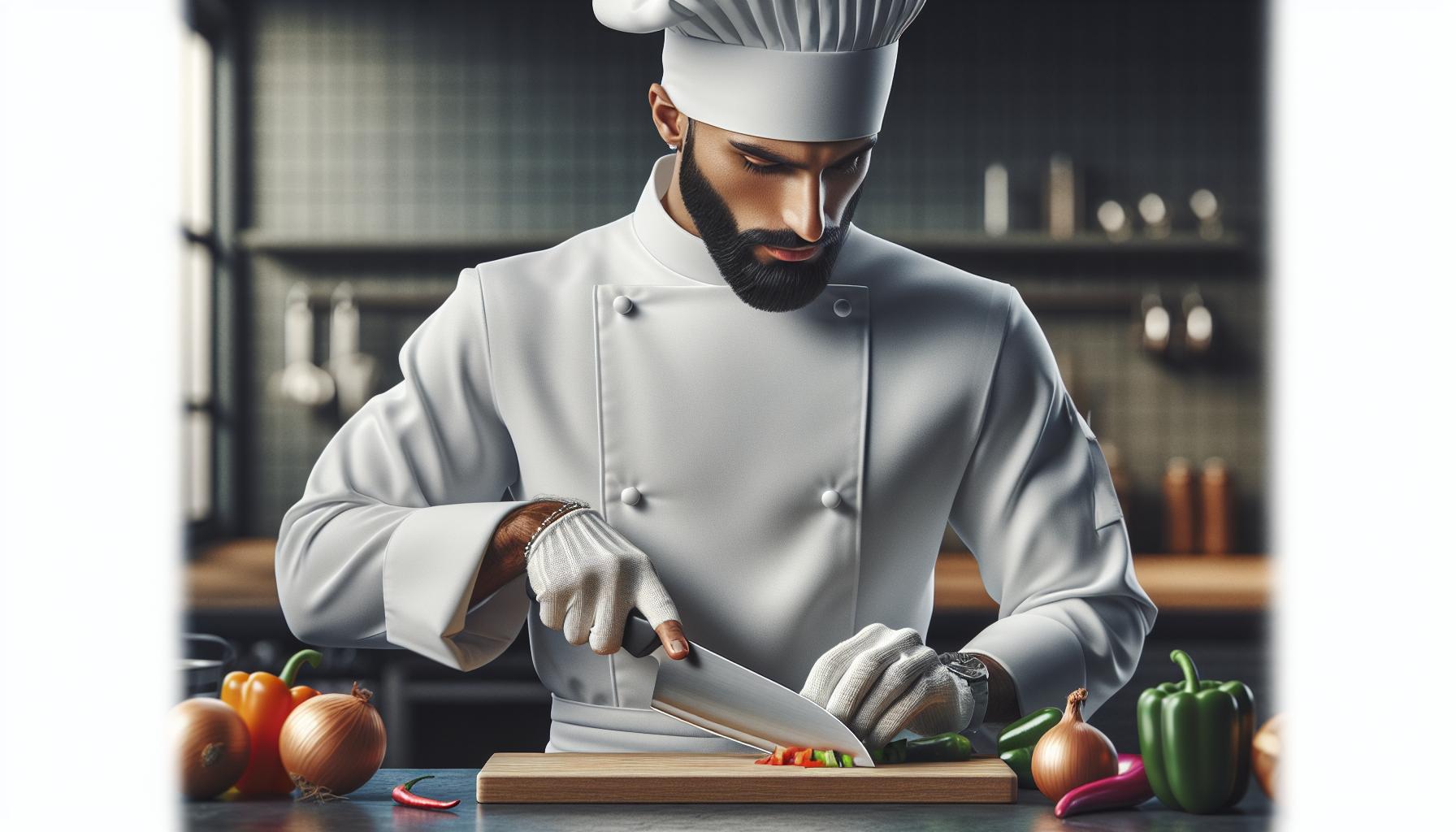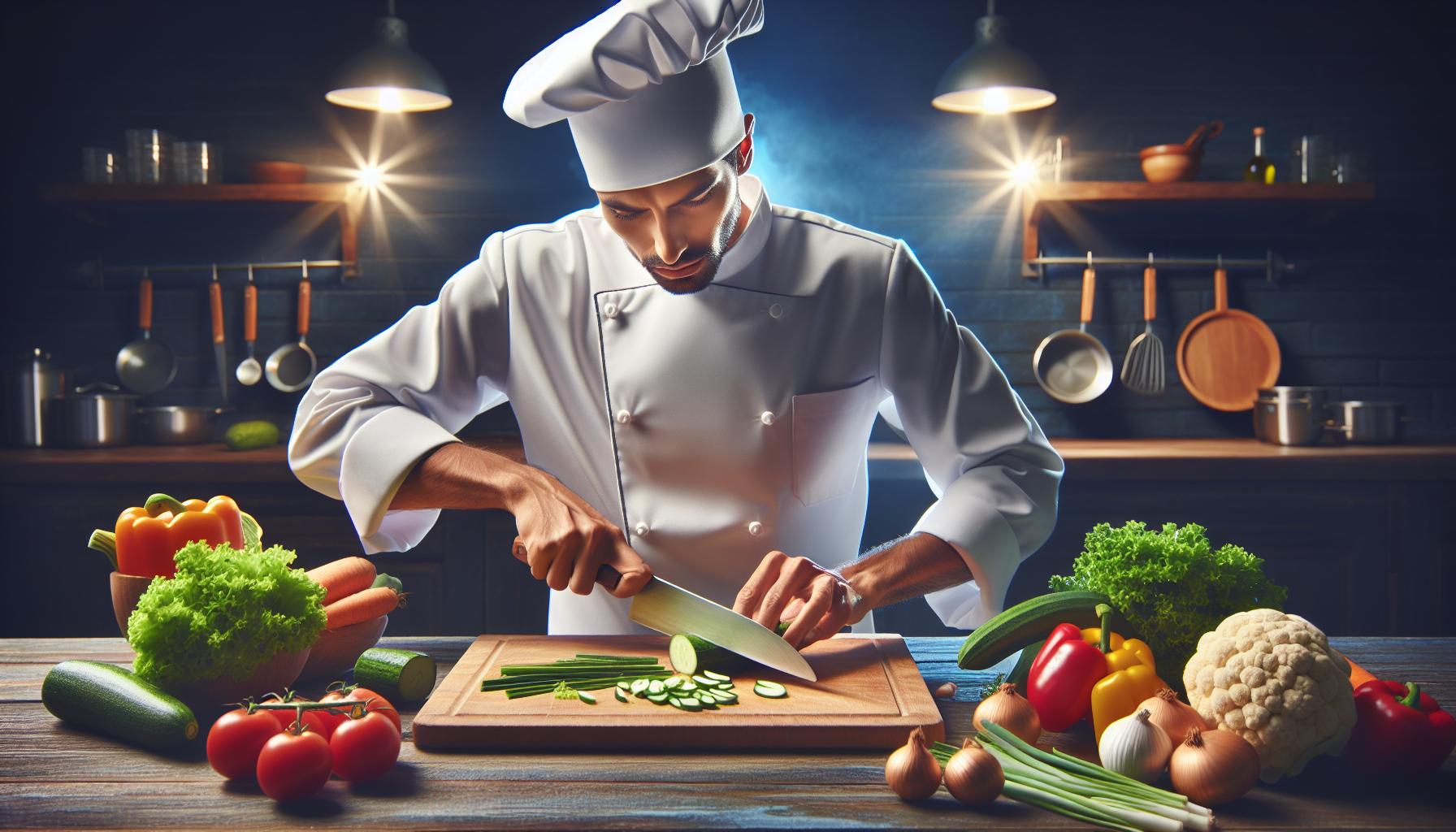
Mastering knife skills transforms ordinary home cooks into kitchen ninjas. While it might seem daunting at first proper cutting techniques don’t just make food look Instagram-worthy – they ensure even cooking optimize flavor and keep all ten fingers where they belong.
From the precise brunoise to the rustic chiffonade professional chefs have developed these techniques over centuries to maximize efficiency and presentation. Whether you’re dicing onions without tears julienning carrots like a pro or creating perfectly uniform potato cubes these fundamental skills will revolutionize your cooking game. It’s time to slice and dice your way to culinary excellence – no culinary school degree required.
Cutting Techniques in Cooking
Kitchen knives come in distinct categories, each designed for specific cutting tasks in food preparation. The right knife selection enhances cutting precision while reducing preparation time.
Chef’s Knife Essentials
A chef’s knife serves as the primary cutting tool in professional kitchens, featuring an 8-10 inch blade with a curved cutting edge. The weighted blade balances perfectly from tip to handle, enabling precise control during chopping, dicing, mincing tasks. Professional chefs use the curved edge for rocking motions when processing herbs vegetables. The broad blade surface helps transport cut ingredients from cutting board to pan. The pointed tip proves essential for detailed cutting work breaking down meats.
Paring and Utility Knives
Paring knives measure 3-4 inches in length with a narrow pointed blade for intricate cutting tasks. These compact knives excel at peeling fruits trimming vegetables creating garnishes. Utility knives span 4-7 inches, bridging the size gap between paring chef’s knives. The slim blade profile allows enhanced maneuverability for mid-sized cutting jobs like slicing sandwiches portioning chicken breasts.
Specialty Kitchen Knives
Specialty knives address specific cutting needs in the kitchen. Bread knives feature long serrated edges that cleanly slice through crusty loaves without compression. Boning knives incorporate flexible narrow blades optimal for separating meat from bone. Santoku knives combine elements of Western Eastern knife designs with a shorter blade dimpled sides to prevent food sticking. Cleavers provide the weight momentum required for cutting through thick meats bones with minimal effort.
Essential Knife Grips and Safety

Mastering proper knife grips enhances control safety during food preparation. Professional chefs employ specific grip techniques to maximize efficiency while minimizing the risk of injury.
The Professional Pinch Grip
The professional pinch grip involves grasping the knife blade between the thumb and index finger near the bolster. The thumb rests on one side of the blade while the index finger curls around the opposite side. The remaining three fingers wrap around the handle maintaining a firm hold. This grip offers optimal balance control stability during precise cuts. Professional chefs use this technique for 90% of their cutting tasks because it provides maximum control over the knife’s tip point. The pinch grip enables smooth rocking motions fluid chopping movements consistent slice thickness.
Proper Hand Positioning
The guiding hand forms a claw shape with fingertips tucked under knuckles positioned against the blade. Knuckles act as a guide for the knife ensuring even consistent cuts. The thumb tucks behind the fingers creating a stable platform for food items. The wrist remains straight aligned with the forearm reducing strain during extended cutting sessions. Professional kitchens emphasize maintaining a 15-degree angle between the knife blade cutting surface. This positioning creates an efficient cutting plane while protecting fingers from accidental cuts.
Fundamental Cutting Techniques

Basic cutting techniques form the foundation of professional food preparation. These essential skills create uniform pieces that cook evenly while maximizing flavor extraction.
Slicing and Chopping Methods
Slicing involves creating long uniform cuts through ingredients using a single forward motion. Professional chefs employ two primary slicing techniques: the draw cut pulls the knife backward through food while the push cut moves the blade forward. Cross-chop methods produce rough cuts by rocking the knife’s blade across ingredients like herbs or vegetables. Straight-down chops create clean cuts through dense ingredients such as root vegetables carrots onions. The slice thickness varies based on specific recipes:
- Paper-thin (1-2mm): For garnishes prosciutto sashimi
- Standard (6mm): For stir-fries salads sandwich filling
- Thick-cut (12mm+): For grilling braising stewing
Dicing and Mincing Skills
Dicing creates uniform cube-shaped pieces essential for consistent cooking times. The standard dice sizes include:
| Dice Type | Size (inches) | Common Uses |
|---|---|---|
| Small | 1/8 inch | Sauces garnishes |
| Medium | 1/4 inch | Soups stews |
| Large | 1/2 inch | Stocks braises |
Mincing produces extremely fine pieces by repeatedly chopping ingredients. Chefs use a rocking motion with the knife’s tip anchored on the cutting board creating pieces smaller than 1/8 inch. This technique releases maximum flavor from herbs garlic shallots.
Julienne and Brunoise Cuts
Julienne cuts create thin matchstick-shaped pieces measuring 1/8 inch × 1/8 inch × 2-3 inches. Professional kitchens use julienne cuts for:
- Raw vegetable garnishes
- Stir-fry ingredients
- Coleslaw components
Brunoise cuts transform julienned ingredients into tiny 1/8-inch cubes through additional cross-cuts. These precise cuts appear in:
- Fine dining garnishes
- Clear consommé soups
- Classic French sauces
Each cut requires maintaining consistent size through careful knife control precise measurements.
Advanced Cutting Techniques

Advanced cutting techniques transform ordinary ingredients into professional-quality preparations through precise, methodical approaches. These methods combine traditional expertise with modern culinary innovations to enhance both presentation and cooking efficiency.
French Classical Cuts
French cuisine established standardized cutting techniques that create uniform pieces for consistent cooking results. The tourné cut shapes vegetables into seven-sided football forms, measuring 2 inches long and 1 inch in diameter. Paysanne cuts produce thin, square-shaped pieces (1/8 inch thick, 1/2 inch square) ideal for quick-cooking soups. The batonnet technique creates rectangular strips (1/4 inch × 1/4 inch × 2-3 inches) perfect for French fries. Diamond-shaped cuts called lozenge enhance visual appeal in formal presentations. Macedoine cuts form precise 1/4-inch cubes used in classical French vegetable preparations.
Asian-Style Knife Skills
Asian cutting techniques emphasize precision and aesthetic presentation while maintaining ingredient integrity. Japanese katsuramuki creates paper-thin vegetable sheets using a single continuous cut, essential for garnishes. Chinese roll cutting produces diagonal slices by rotating ingredients between cuts, creating pieces with maximum surface area. The rangiri technique involves rolling vegetables while cutting at an angle, producing irregular shapes that hold sauces effectively. Sasagaki cutting creates delicate needle-like strips from root vegetables. Japanese katsura-muki produces extremely thin daikon sheets used in traditional kaiseki cuisine presentations.
Knife Care and Maintenance
Professional knife care extends blade longevity and maintains optimal cutting performance. Proper maintenance practices preserve edge sharpness while preventing rust and damage.
Proper Cleaning Methods
Hand washing knives immediately after use prevents food residue from damaging the blade. A mild dish soap and warm water solution effectively removes food particles without corroding the metal. Drying knives with a clean cloth prevents water spots and rust formation on carbon steel blades. Storing knives in a knife block or magnetic strip keeps edges protected from dulling or chipping in drawers. Avoid placing knives in dishwashers as harsh detergents and high temperatures damage handles and dull blades.
Sharpening and Honing Tips
Regular honing with a steel rod realigns the blade edge between sharpening sessions. A whetstone with 1000-grit for sharpening and 6000-grit for finishing creates the optimal cutting edge. Maintaining a consistent 20-degree angle while sharpening ensures even edge formation. Professional knife sharpening services offer expertise for complex blade profiles or damaged edges. Testing blade sharpness on paper reveals proper edge refinement – a sharp knife cuts cleanly without tearing. Honing steel applications between meals preserve the blade’s cutting performance throughout busy cooking sessions.
Mastering Cutting Technique
Mastering cutting techniques is a journey that transforms everyday cooking into culinary artistry. With proper knife skills home cooks can achieve professional-level results while ensuring safety and efficiency in their kitchen endeavors.
The combination of correct knife selection proper grip techniques and regular maintenance creates a foundation for culinary success. Whether preparing simple family meals or tackling complex recipes these essential skills make cooking more enjoyable and rewarding.
By dedicating time to practice and perfect these fundamental techniques anyone can elevate their cooking game and create dishes that are as visually appealing as they are delicious.


